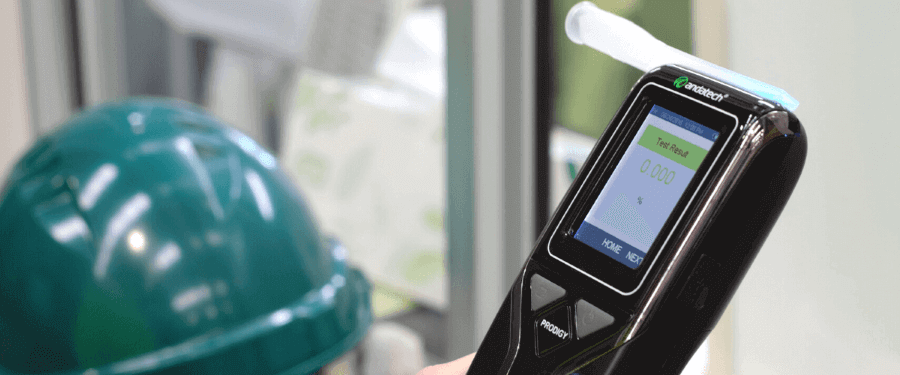Originating in 1988, Australian Standard AS3547:2019 is the 4th edition of the Standard that lays out performance, testing, and information display requirements for breathalysers sold in Australia. It will supersede AS3547:1997 in June 2022 and applies to handheld breathalysers, wall mounted breathalysers, as well as interlock devices, while excluding disposable single-use breathalysers and personal breathalysers which will be covered by a separate Standard in the future. The updates of this latest Standard for breathalysers will increase the reliability and accuracy of industrial breathalysers used on-site and at workplaces.
1. Measurement unit changed from %BAC to g/210L in compliant with law enforcement and National Measurement Regulations
The results of breath alcohol testing used to be displayed in grams of alcohol per 100mL of blood, more commonly known as %BAC, based on a blood to breath ratio of 2300:1. In order to be compliant with law enforcement of breath alcohol testing and legal units of measurement as defined by the National Measurement Regulations of Australia, breathalysers certified under AS3547:2019 should display the measurement unit of grams of alcohol per 210L of breath (g/210L) instead of %BAC.
2. Heightened requirement for accuracy through the introduction of Maximum Permissible Errors (MPEs)
The breath alcohol results displayed on breathalysers should not exceed the Maximum Permissible Errors (MPEs) of ±0.005g/210L from the actual breath alcohol level. If the breath alcohol level is higher than 0.050g/210L, the MPEs will be 10% higher or lower than the actual breath alcohol level.
The accuracy of breathalysers based on MPEs must be maintained for at least 6 months after each calibration. This ensures that the breathalysers are accurate over long term use especially on-site and at workplace.
3. Standardised recovery time of less than or equal to 1 minute for subsequent testing
As industrial breathalysers are used frequently and regularly by many workers and employees, they are required to have a recovery time of less than or equal to 1 minute so that subsequent testing can be carried out efficiently without being affected by the results acquired from previous tests. If the breath alcohol level of the previous test is higher than 0.100g/210L, the breathalyser should be ready to take the next breath alcohol test within the next 3 minutes. This recovery time applies to both handheld and wall mounted breathalysers.
4. Accurate results under various physical or environmental conditions
A breathalyser is considered to be reliable when it can display accurate data regardless of the physical and environmental conditions in which the breath alcohol level testing is carried out. Australian Standard AS3547:2019 subjects the breathalysers to extensive testing under various conditions such as:
- State of charge of the battery
- A wide range of temperature and humidity
- Electrical disturbances
- Shock and vibration
- Presence of interfering substances such as acetone, carbon monoxide, methane, and methanol
5. Unalterable breath alcohol level data
Since it is a common industrial practice to keep workers' and employees' breath alcohol level data for documentation purposes under the alcohol and drug testing policy, the Standard specifies the requirement that the data storage of the breathalysers should prevent overwriting and alteration. This ensures the legitimacy of the breath alcohol test data and can prevent fraud from happening.
Not all breathalysers sold in Australia are certified under the Australian Standard AS3547:2019, so you are advised to communicate with your breathalyser supplier for any questions related to the AS3547:2019 certification. Nevertheless, breathalysers with AS3547:2019 certification provide the quality assurance that they are accurate and reliable to be used for on-site and workplace screening.





